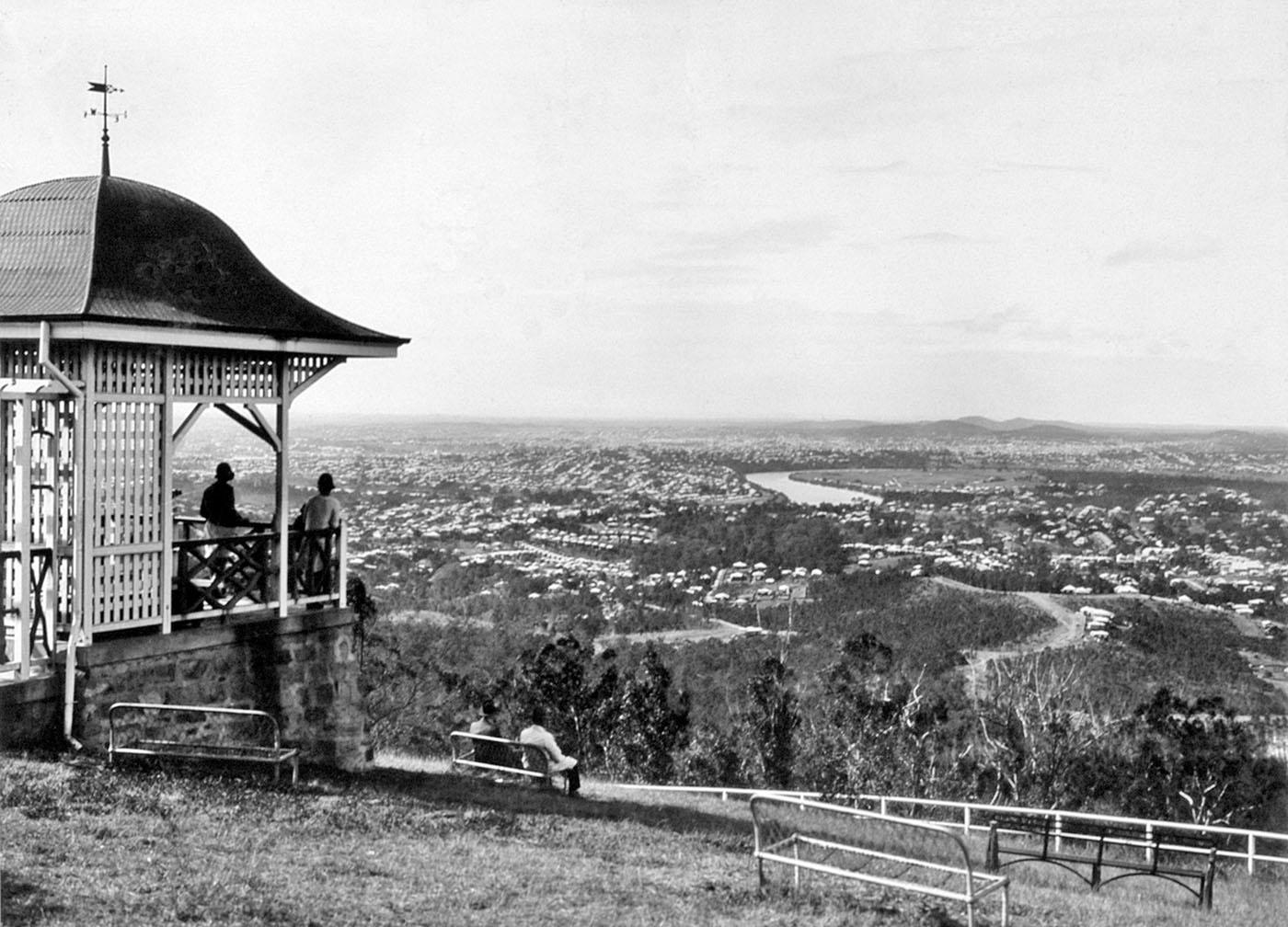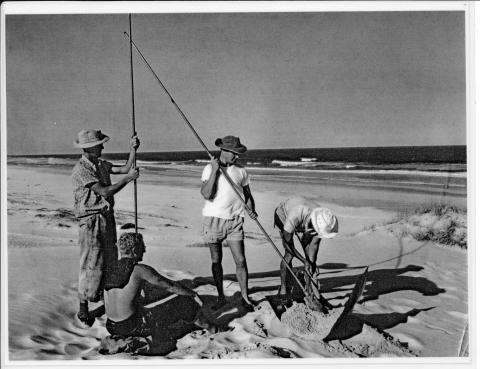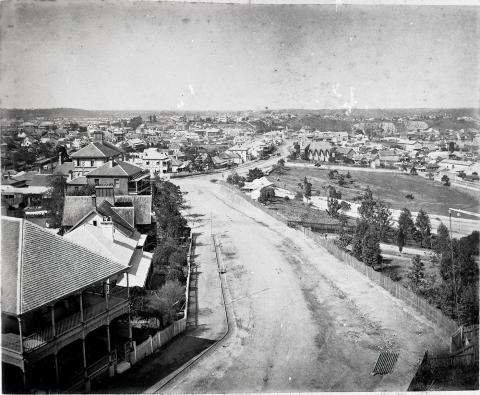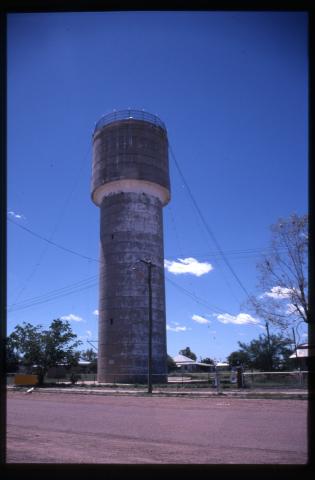
- News of the day
-
Cairns Post, Friday 22 June 1923:
MOUNT COOT-THA.
A "SUGAR BAG" NEAR BRISBANE.
Out a few miles from Brisbane and within easy walking distance of trams and trains is the terminating point of Taylor's Range, Mount Coot-tha.
The name is aboriginal, signifying honey. In the days when the blacks had their camps on the slopes of the hills and hunted in the scrubs, the locality was famous for the "sugar bags" the honey of the little stingless native bee (writes the Queensland correpsondent to the "Age").
The outlook from Mt. Coot-tha is very beautfiul. Sir Henry Braddon, who with other Chamber of Commercers lately visited the spot, said that several inter-State visitors had an animated discussion as to whether any city in Australia had a finer panoramic outlook.
"We were inclined to agree as a whole, after a little pressing of royal claims, that there was really nothing to surpass the truly wonderful views of the city which were spread before us from the range of hills."
Cheavlier, the artist who came to Australia some years ago with the Duke of Edinburgh, was credited with the remark, that the most beautiful view in the world was from the top of the Bulli Pass in New South Wales. Of course he had not seen Mount Coot-tha. - Background
-
Mt Coot-tha is part of the Taylor Range which forms a backdrop of hills to the City of Brisbane, and is the best known vantage point from which to view the city and surrounds. Mt Coot-tha was previously known as One-Tree-Hill, a reference to when the hill terminated in a bare knoll with a solitary large tree at the summit.
The Taylor Range was originally named Glenmorrison Range by the explorer John Oxley in 1823. In July 1828, this range was referred to as Glenmoriston's Range and Sir Herbert Taylor's Range by the colonial botanist Charles Fraser, and as Glenmorriston's Range by Captain Patrick Logan, Commandant of the penal settlement at Brisbane.
The first recorded ascent by European explorers was on 6 July 1828, with Fraser, Captain Logan and explorer Alan Cunningham. Fraser's journal describes in detail the species of trees found there, and that the view from the south-east to north-west was extensive and very grand, presenting an immense thinly wooded plain, whose surface was gently undulated, and clothed with luxuriant grass.
A request to purchase One-Tree-Hill in 1865 was refused, and the Surveyor-General replied that it will be required for trigonometrical purposes, and is moreover a point to which inhabitants of this city frequently repair for recreation on account of the extensive view and fresh air.
The Taylor Range provided a source of good timber and One-Tree-Hill was first proclaimed a reserve for railway purposes on 21 February 1873 in order that the source of timber could be secured for development of the railway from Ipswich to Brisbane. In 1880, One-Tree-Hill, together with the surrounding area of 1500 acres, was placed in charge of a body of Trustees as a reserve for public recreation. It was at this time that the name was changed to Mt Coot-tha. Mr HW Radford, Clerk of the Parliament, and Honorary Secretary to the Trustees of the Public Recreation Reserve, questioned a descendant of earlier members of the aboriginal tribe that frequented that area and discovered that the aboriginal name for the area was Coot-tha or Kuta, the aboriginal name for honey or the place of honey. Hence the name change to its official title of Mt Coot-tha.
The summit was accessed by walking tracks, and by the 1870s some visitors were driving up with horse and carriages. When Mt Coot-tha became a reserve for public recreation, the track was improved to become a steep and windy road. The surviving one-tree was surrounded by a protective fence and in 1886 a shelter shed and water tank was built. Mt Coot-tha was proclaimed a reserve for native birds on 20 December 1890.
The Saturday half-holiday was legislated for in Queensland as part of the 1900 Factory Act. The half-holiday was the beginning of the weekend as an institution, and together with public holidays the popularity of recreation areas and activities increased. With the advent of the motor car, motoring itself became a recreation activity. By 1918 it could be asserted that the steep rough bridle tracks of years ago were replaced with well-made roads and paths so that pedestrians and motorists could attain the highest points of Mt Coot-tha with the utmost ease. This road later became Sir Samuel Griffith Drive.
In 1918 the Trustees of the Reserve requested that the Greater Brisbane Council take over the administration of the area and at this time it is believed that a new kiosk was built next to the existing shelter shed.
The Lookout
Looking at the view has been the most popular and continuing form of recreation on Mt Coot-tha, and in 1882 the Duke of Clarence and Prince George (later King George V) commemorated their visit to Mt Coot-tha by planting two Moreton Bay figs on the summit. By 1902 the viewing spot had been formalised by the erection of a stone pillar topped with a metal plate engraved with directional lines pointing to distant landmarks and views. There were also protective railings and a pay-as-you-look telescope.
A small viewing gazebo with an ogee shaped roof, stone base, open balustrades, pergola entrance, and housing a telescope was constructed c.1918. In 1927 the Duke and Duchess of York were photographed visiting Mt Coot-tha standing at the direction finder.
A 1950 design by City Architect F Costello shows a raised viewing platform with a concrete canopy on a stone base, with a large radiating lookout platform above a stone retaining wall. The stand of trees at the summit were cleared for the construction of the lookout platform. The 1950 scheme showed a drinking fountain in place of the current direction finder, and a direction finder located on the raised viewing platform.
Courtesy of Queensland Heritage Register
/152.9582096,-27.4840645,7/450x450@2x.png?access_token=pk.eyJ1IjoicXNhLWRpc2NvLXFsZCIsImEiOiJjamJmdTgyZXEyeWNjMnlxZm8xcmtieHgxIn0.lmT9J5tTPKGuuccQgCVSAg)



